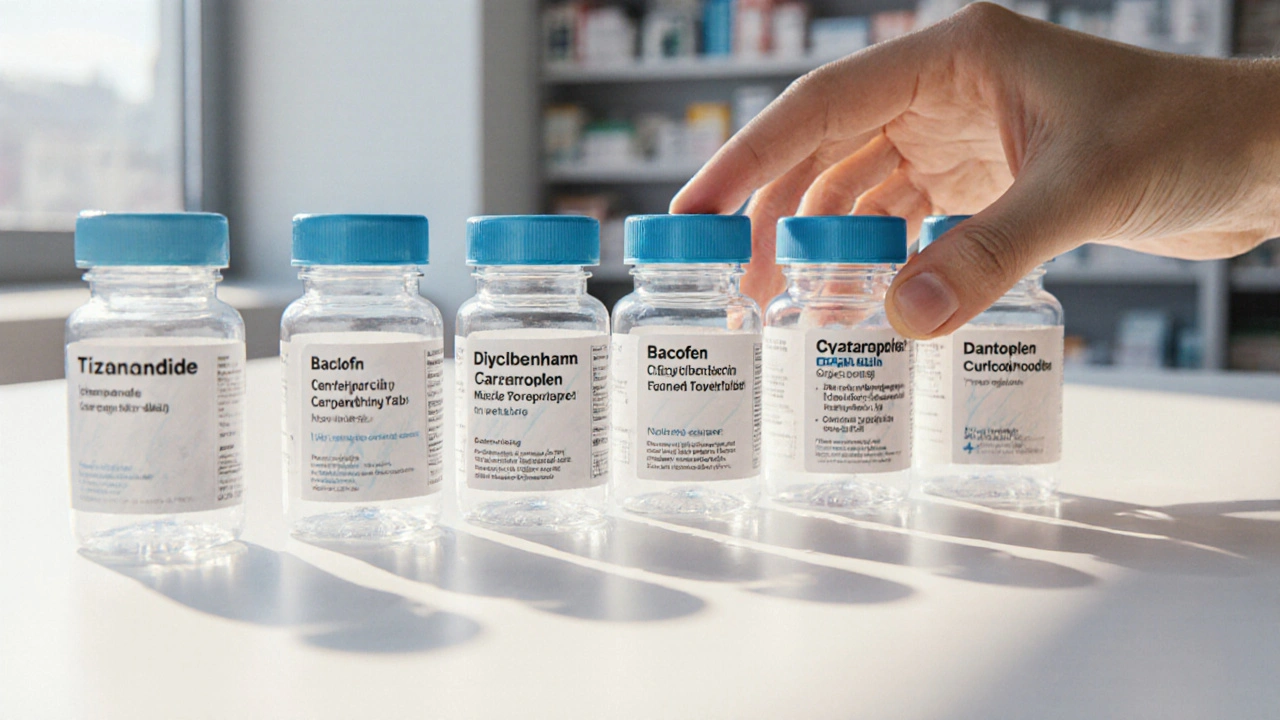
A detailed comparison of Tizanidine with common muscle‑relaxant alternatives, covering dosing, side effects, best‑use scenarios and a helpful decision checklist.
When dealing with muscle spasticity, a condition where muscles tighten involuntarily, causing stiffness and uncontrolled movements. Also known as spasticity, it often follows a neurological injury or disease.
It closely relates to muscle stiffness, the sensation of tight, hard muscles that limit range of motion and can be worsened by certain medications. Many readers find that physical therapy, targeted exercises and stretches designed to improve flexibility and reduce spastic episodes plays a key role in everyday management.
Muscle spasticity is not a stand‑alone problem; it usually stems from damage to the brain or spinal cord. Conditions such as multiple sclerosis, stroke, cerebral palsy, and traumatic brain injury are the most common triggers. The nervous system loses its ability to regulate muscle tone, so signals that should stay off keep firing, leading to constant contraction. Medications that affect the nervous system can either help or aggravate the situation. For example, alpha‑1 blockers like prazosin or doxazosin, often prescribed for hypertension, have been reported to influence muscle tone and sometimes reduce spasticity, while other drugs such as certain antidepressants may increase dizziness or dry mouth, making exercises harder.
Managing this condition requires a three‑pronged approach: medication, therapy, and lifestyle tweaks. Doctors may prescribe muscle relaxants—baclofen, tizanidine, or diazepam—to lower the excitatory signals. Physical therapists then teach stretching routines, strengthening drills, and functional training to keep joints mobile. Meanwhile, patients benefit from staying hydrated, monitoring blood pressure (especially if on ACE inhibitors like lisinopril), and avoiding triggers that raise muscle tension, such as stress or overheating. Some people also explore botulinum toxin injections for focal spasticity, while others use orthotic devices to support affected limbs.
Beyond the core treatments, paying attention to side effects can prevent setbacks. Medications that cause dizziness or dry mouth, as highlighted in recent guides on cancer‑related xerostomia and antidepressant‑induced dizziness, may also interfere with balance and oral health, compounding the challenges of spasticity. Simple self‑care steps—regular mouth rinses, gentle breathing exercises, and short, frequent stretching breaks—can mitigate these issues. When you combine drug therapy with consistent physical therapy and mindful daily habits, you create a smoother path toward regaining function.
Below you’ll find a curated collection of articles that dive deeper into specific drugs, symptom management strategies, and lifestyle tips. Whether you’re looking for a drug comparison, ways to handle medication side effects, or practical rehab advice, the resources here cover the breadth of information you’ll need to tackle muscle spasticity head‑on.

A detailed comparison of Tizanidine with common muscle‑relaxant alternatives, covering dosing, side effects, best‑use scenarios and a helpful decision checklist.